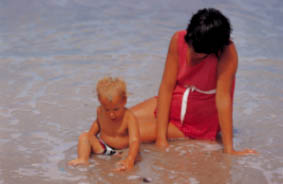 Whats your oldest memory? I once crashed my adult-sized trike, sucked the black powder off match tips, and petted swarms of aphids crawling my skin. (Hey, they look like ladybugs.) Yet, I bet I remembered wrong. You see, we recall tidbits that never took place. Plus, we miss most of what really went down.
Whats your oldest memory? I once crashed my adult-sized trike, sucked the black powder off match tips, and petted swarms of aphids crawling my skin. (Hey, they look like ladybugs.) Yet, I bet I remembered wrong. You see, we recall tidbits that never took place. Plus, we miss most of what really went down.
And memories fade.
I once got a perfect grade in an advanced university calculus class. Quadruple integrals. Not a single error. A decade later, I’ve forgotten the integral of x.
Whats worse? You can alter a person’s memories. You do so by suggesting stuff that never took place. In the movie The Girl on the Train, Rachels husband accuses her of committing violent acts during drunk spells. She believes him. But he did the bad stuff, not her.
“The mere suggestion that something may have existed is enough to cause its inclusion in your mental recreation of the event,” says Roberta Ness in her book Innovation Generation: How to Produce Creative and Useful Scientific Ideas (p. 68). Thats why parents of mentally ill kids believe the wild tales the kids may tell. When your child reports for weeks that hes being followed, chased, or gunned down, consider that medical help may be required.
We also absorb little within our line of vision. So, our memories are selective. For example, when we read, we glance over words. We drum up mental movies the author never intended. We tune out what doesnt jive with our headspace.
We even misread body language. On a test of body language IQ, I bombed. A picture of a teen crumpled in pain, I marked as optimistic. A photo of a sneer-smiling woman rolling her eyes, I marked as playful. My test result? 25% accuracy and a lesson in humility.
Plus, we each walk lifes steps that make us seeand rememberdifferently.
For instance, fans flock to Lady Gagas shows. Yet each fan has a unique mental replay. Hefty men bash Lady Gagas jelly rolls. Preteens pretend it’s Justin-Bieber-in-a-wig. All at the same show.
Even during spats, people have polar-opposite views of the same predicament. Say I fail to thank a friend for a tea latte because I’m craving a coconut mocha. I see myself as pining; my friend sees me as whining.
And the worst memories cast blame. Unjust blame. We can find a basis to blame anyone. We just need to digand lay it on thick. Many of us blame mom for our mishapseven though mom cooked us 5,000 meals and laundered 1,000 loads. Even Mother Teresa gets flack in the news.
Whats the solution to faulty or misplaced memories? Positive memories. Memories where everyone gains. Focus on them.
Roberta Ness points out the role of biases in misplaced memories and more in her book Innovation Generation: How to Produce Creative and Useful Scientific Ideas:
We believe we remember better than we do. This is called hindsight bias.
And what you expect shifts your memories.
One study found that subjects thought they remembered a result correctlyeven when they hadnt.
“Details learned after an event can overturn recalled reality” (p. 68). So, be wary of what you hear.
We may believe we observed something even if we didn’t. This happens when someone presents a view that confirms that observation.
We may think we came up with something original, even though another source told us first. [I wrote a script that claimed thought travelled on mathematical asymptotes (curved lines that go on for infinity). A decade later, I read news of a scientist claiming the same idea, almost word for word].
And to rehash the worst: “The mere suggestion that something may have existed is enough to cause its inclusion in your mental recreation of the event” (p. 68).
So, hang around people who make you smile. Youre certain to shift your memories for the greater good. A paradox? I call it a creative spark!


